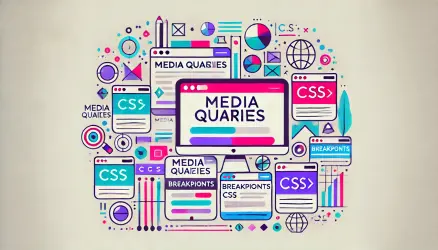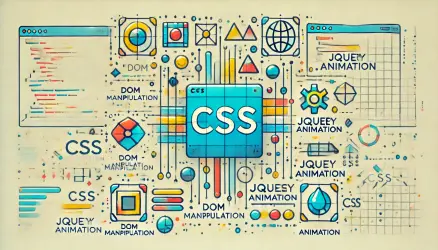The text-wrap property in CSS offers a powerful way to control how text is wrapped within its container. While traditional text wrapping is based on basic rules, newer values like pretty and balance provide enhanced options for achieving visually appealing text layouts. This post will explore how these values work and when to use them.
“Typography is the craft of endowing human language with a durable visual form.” – Robert Bringhurst
What is the Text-Wrap Property?
The text-wrap property is part of the CSS Text Module and is designed to handle text wrapping strategies. By default, text wraps according to the browser’s standard behavior. However, with text-wrap, developers can exert finer control over how text fits within its container.
Basic Syntax
element {
text-wrap: value;
}CSS text-wrap Values
Here are the applicable values for the text-wrap property:
normal: The default behavior where text wraps naturally within the container.pretty: Optimizes text wrapping for aesthetic appeal, improving line breaks to enhance readability.balance: Balances the length of lines, ensuring lines within a block have a more consistent width.
Diving Into Pretty and Balance Values
Both pretty and balance are designed to address specific challenges in text layout, enhancing readability and the overall visual experience. While pretty focuses on aesthetic line breaks, balance works towards maintaining uniformity in line lengths.
Understanding the distinctions between these values will help you choose the right one for your design needs.
Pretty
The pretty value focuses on improving the appearance of text by adjusting line breaks for better aesthetics. It not only minimizes orphan words but also makes additional refinements to improve the flow and readability of text.
For example, pretty adjusts hyphenation if consecutive hyphenated lines appear at the end of a paragraph. It can also make subtle adjustments to previous lines to create space for better wrapping.
Additionally, when text justification is applied, pretty ensures that the adjustments for alignment don’t lead to awkward breaks or spacing issues. This makes it an excellent choice for achieving more polished and professional typography.
While its current focus is primarily on improving line breaks and handling orphans, future updates to text-wrap: pretty may introduce more advanced text-breaking optimizations.
p {
text-wrap: pretty;
}Using
prettyensures that line breaks enhance the reading experience while handling hyphenation and justification seamlessly.
Balance
On the other hand, balance ensures that the lines of text within a block are of similar length. This helps avoid scenarios where one line is significantly shorter than the others, which can disrupt the visual flow.
div {
text-wrap: balance;
}This value is particularly beneficial when designing responsive layouts, as it maintains consistent line lengths across various screen sizes.
See the Pen
Animated comparison of balanced and unbalanced headlines by Roee Yossef (@roeey)
on CodePen.
Practical Examples
Let’s explore a practical use case where both pretty and balance can be applied. Imagine a Hero Section on your website with an unevenly wrapped title.
text-wrap property. Additionally, it’s best to view these examples on desktop screens for optimal results.Lorem ipsum dolor sit amet, consectetur adipiscing elit. Integer nec odio. Praesent libero. Sed cursus ante dapibus diam.
Applying text-wrap: balance to the headline will ensure that the lines are evenly distributed, creating a more consistent appearance. This guarantees a balanced layout regardless of the text content in the headline.
Lorem ipsum dolor sit amet, consectetur adipiscing elit. Integer nec odio. Praesent libero. Sed cursus ante dapibus diam.
In the following example, notice how an orphan word appears at the end of the subtitle:
Lorem ipsum dolor sit amet, consectetur adipiscing elit. Integer nec odio. Praesent libero. Sed cursus ante dapibus diam.
Using text-wrap: pretty will resolve the issue regardless of screen width. It consistently ensures that no orphan words remain, which is a remarkable improvement.
Lorem ipsum dolor sit amet, consectetur adipiscing elit. Integer nec odio. Praesent libero. Sed cursus ante dapibus diam.
In this example, the balanced wrapping ensures consistent line lengths, reducing the likelihood of orphan words appearing at the end of a block.
Browser Support
As of now, text-wrap and its advanced values are experimental features. Check the latest browser compatibility tables to ensure support for your target audience.
Performance Considerations
While the text-wrap property can greatly enhance the visual appeal of your content, it’s important to consider its impact on performance:
- Rendering Overhead: Advanced text wrapping algorithms like
prettyandbalancerequire more computational resources compared to the defaultnormalvalue. This could
lead to longer rendering times, particularly on large blocks of text. - Impact on Low-End Devices: On devices with limited processing power, using
prettyorbalancemay result in slower performance, affecting the user experience. - Responsiveness: When combined with responsive designs, these values can sometimes cause layout shifts as the browser
recalculates line breaks. This could lead to a slight delay in rendering fully responsive text blocks.
It’s essential to test these values thoroughly, especially on resource-constrained devices, to ensure optimal performance and user experience.
To mitigate performance issues:
- Use
text-wrapselectively, applying it only to key text elements where visual balance is crucial. - Test your site on a range of devices and screen sizes to identify any potential performance bottlenecks.
- Consider fallback options for older browsers or low-powered devices by setting
normalas the default and progressively enhancing withprettyorbalance.
Conclusion
The text-wrap property, especially with values like pretty and balance, provides powerful tools for improving text presentation in web design. By leveraging these values, developers can create layouts that not only look better but also enhance readability and user experience.
These values also play a critical role in solving common typography issues, such as orphan words, ensuring your text remains visually harmonious. However, be mindful of performance implications, and ensure thorough testing to deliver a seamless experience across all devices.
“Typography goes beyond just font selection; it involves structuring content for optimal readability and aesthetics. Learn more about this in our detailed guide on The Role of Typographic Hierarchy and Fonts in Effective Web Design.”
For more insights into CSS properties, stay tuned to our blog and explore our CSS category for more articles.



